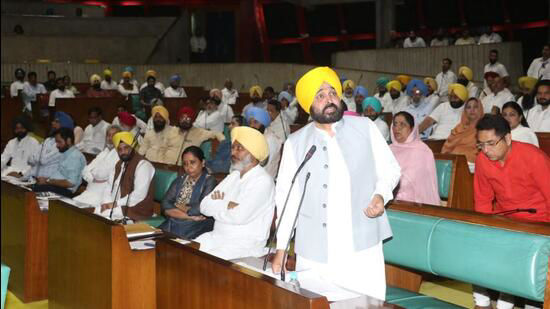DESIBUZZCanada
Events Listings
Dummy Post

International Day Of Yoga To Be Virtually Celebrated Saturday At 4pm

CANCELLED: Coronavirus Fears Kills Surrey’s Vaisakhi Day Parade

ADVERTISE WITH US: DESIBUZZCanada Is The Most Read South Asian Publication Online

SURREY LIBRARIES: Get Technology Help At Surrey Libraries

WALLY OPPAL: Surrey Police Transition Update On Feb. 26

GONE ARE THE DAYS - Feature Documentary Trailer

Technology Help At Surrey Libraries

Birding Walks

Plea Poetry/short Story : Youth Contest

International Folk Dancing Drop-in Sessions
THE DEBT TRAP: Punjab Needs To Restrict Unproductive Revenue Expenditure
- July 9, 2022

Being one of the most indebted state, Punjab is expected to remain in the worst position as its debt-GSDP ratio is projected to exceed 45 per cent in 2026-27, with further deterioration in its fiscal position. The state needs to take corrective measures by cutting down expenditure on non-merit goods, according to a Reserve Bank of India (RBI) study.
The current effective outstanding debt of Punjab stands at Rs 2.63 lakh crore. Much of these borrowings have been going into debt servicing i.e repaying existing loans and interest payments in recent years.
Recently, presenting the White Paper on state finances in the state legislative assembly blamed the previous government for the fiscal mess and said that the previous governments, instead of applying necessary correctives, continued to slip into fiscal profligacy, as evident from unchecked increase in unproductive revenue expenditure, freebies and unmerited subsidies, virtual collapse in the capital and social sector investments vital for future growth and non-realisation of its potential tax and non-tax revenues.
The white paper on finances presented by AAP government is a similar to white paper tabled by former Chief Minister Amarinder Singh’s government (Congress) during the first Budget session of Vidhan Sabha in 2017.
Although the successive governments blamed the previous regime for the mess, but one thing is sure that Punjab needs to improve its fiscal health as it is in a precarious condition.

The Crisis
The RBI study pointed out that Punjab is among the five states, namely, Bihar, Kerala, Punjab, Rajasthan, and West Bengal, which are most stressed states fiscally.
In Punjab and these four states, the debt stock is no longer sustainable, as the debt growth has outpaced their Gross State Domestic Product (GSDP) growth in the last five years, it warned.
Referring to Sri Lanka crisis, the study said that the slowdown in own tax revenue, a high share of committed expenditure and rising subsidy burdens have stretched state government finances already exacerbated by COVID-19.
The study added that new sources of risks have emerged in the form of rising expenditure on non-merit freebies, expanding contingent liabilities, and the ballooning overdue of DISCOMs. The study warned that financial risks from freebies appeared to be the highest in the case of Punjab, where the state government has expanded the list recently. So, the state needs to undertake significant corrective steps to stabilise their debt levels.
Corrective Action
As a corrective measure, the Punjab must restrict their revenue expenses by cutting down expenditure on non-merit goods in the near term. In the medium term, it needs to put efforts towards stabilising debt levels. Further, large scale reforms in power distribution sector would enable the power distribution companies to reduce losses and make them financially sustainable and operationally efficient. In the long term, increasing the share of capital outlays in the total expenditure will help create long-term assets, generate revenue and boost operational efficiency. Alongside, state governments need to conduct fiscal risk analyses and stress test their debt profiles regularly to be able to put in place provisioning and other specific risk mitigation strategies to manage fiscal risks efficiently.
Courtesy The Rising Panjab Bureau


















